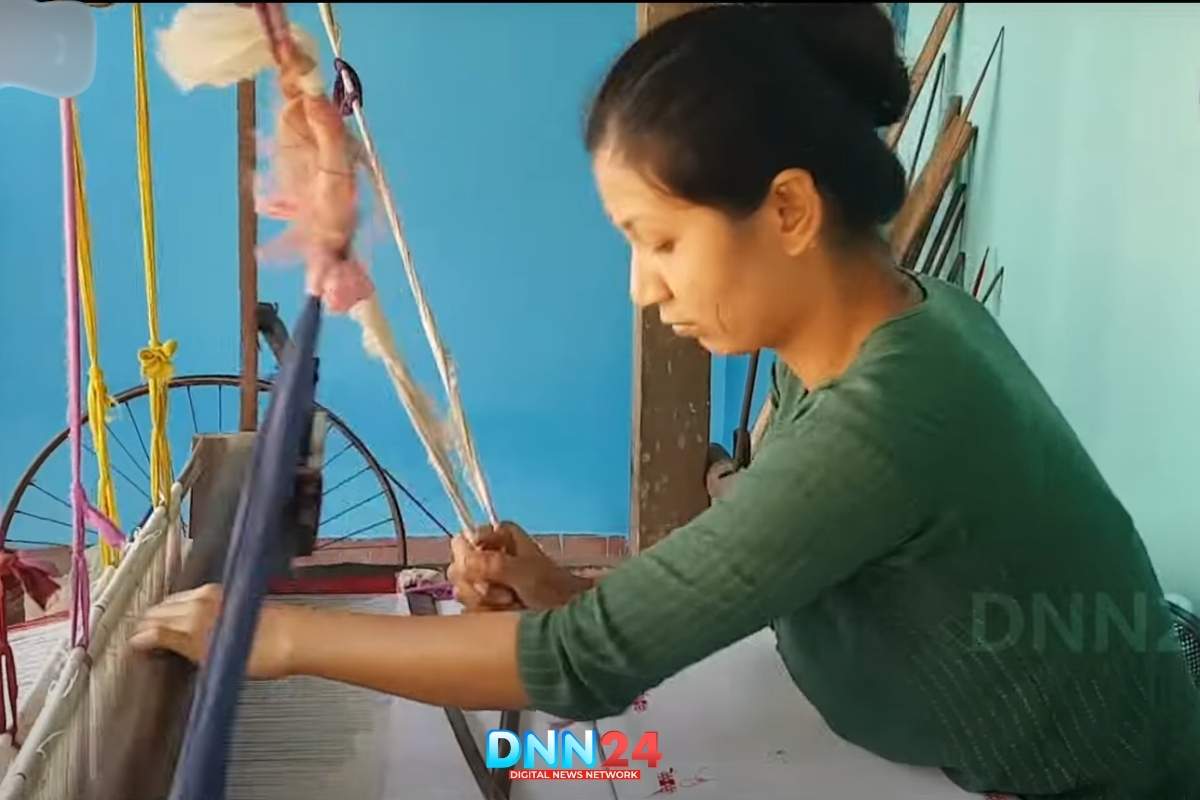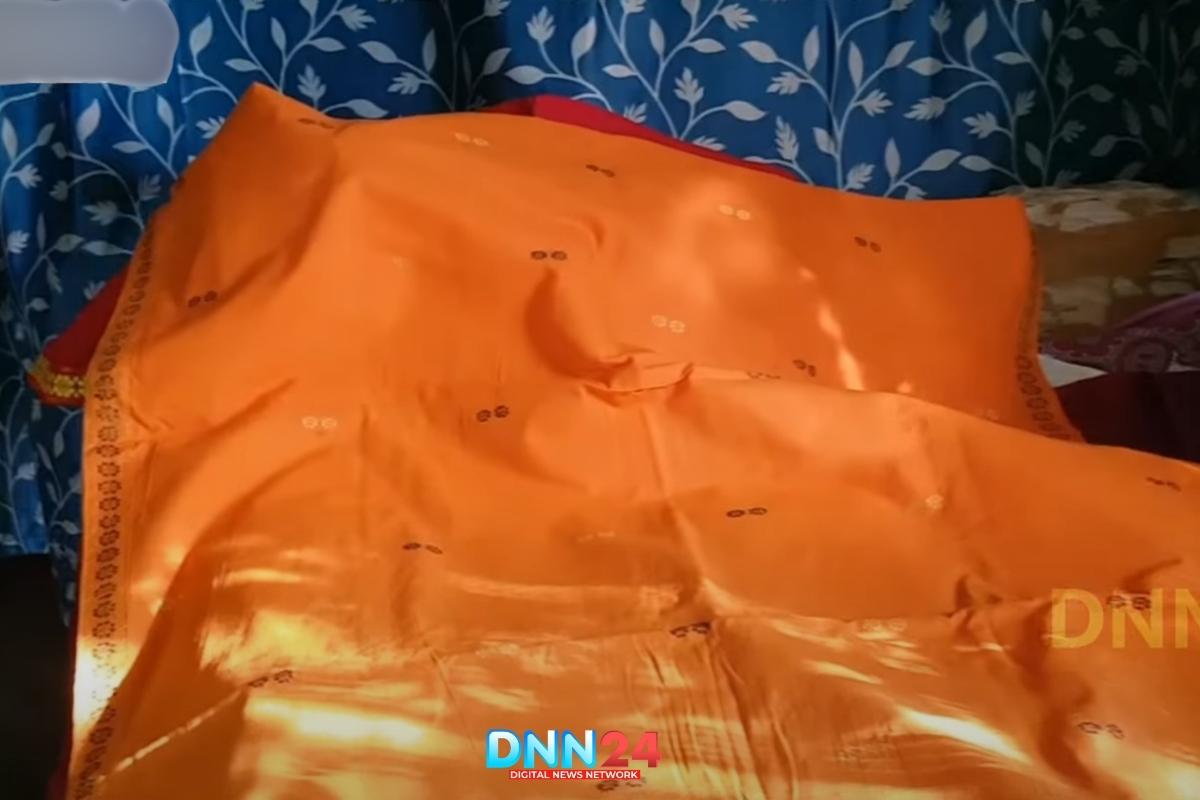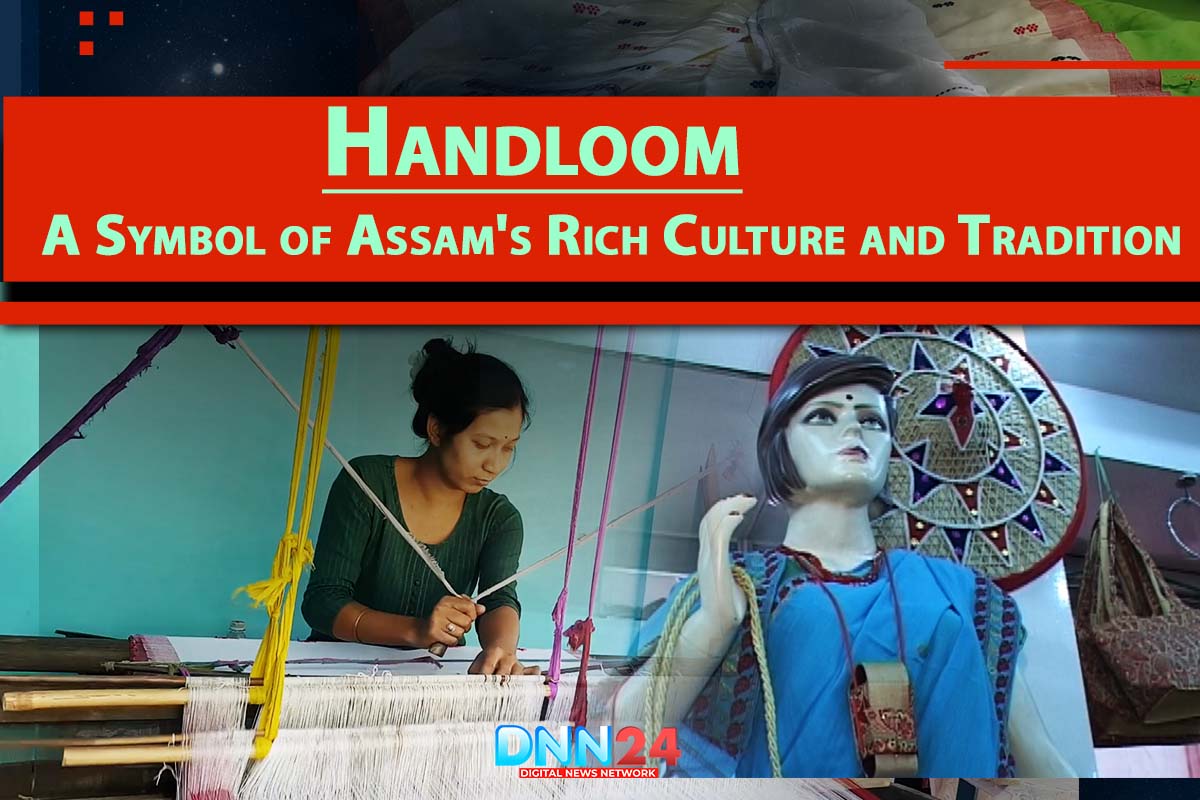Handloom in Assam is not merely a craft but a reflection of its rich cultural heritage. It provides livelihood to millions, especially women, who constitute over 60% of the workforce in this industry. Assam boasts the highest number of handloom weavers in India, where weaving is considered a crucial household activity to boost family income and improve living standards. Women play a pivotal role in preserving this art by creating traditional attire like Mekhla-Chadar and Gamchha, particularly for festivals such as Bhogali Bihu. This article delves into the inspiring stories of these women and the cultural significance of Assam’s handloom industry.
Handloom Industry: Pillar of Assam’s Culture and Livelihood
The handloom industry in Assam is deeply rooted in its cultural fabric. It is one of the state’s largest cottage industries, symbolizing tradition, artistry, and resilience. This craft is not just about weaving fabric but weaving dreams and sustenance for countless families.

In rural Assam, almost every household has a handloom or foot loom, which is used for creating exquisite textiles. This industry supports millions of artisans who blend traditional motifs with contemporary designs. Their creations often reflect stories of Assam’s history, nature, and spirituality. These artisans contribute significantly to the local economy while keeping alive the timeless traditions of their forefathers.
Women Weavers: Backbone of the Industry
Women weavers in Assam hold an esteemed position in the handloom industry. Their contribution goes beyond economic sustenance, embodying cultural preservation and artistic expression.
These women use their looms to weave intricate patterns that are emblematic of Assam’s identity. Besides making clothes for their families, many women produce textiles in order to generate income. Their work not only preserves traditional craftsmanship but also uplifts their families’ financial stability. This demonstrates how the craft empowers women by promoting self-reliance and economic independence.

Assam proudly leads the nation in the number of handloom weavers, with a staggering percentage of them being women. The state has over 1.5 million weavers, who primarily reside in rural areas.
This dominance is not a coincidence but the result of centuries-old traditions passed down through generations. Weaving is not just a profession but a way of life for these communities. Women, particularly in remote areas, find solace and purpose in their looms, which act as both a creative outlet and a source of livelihood.
Rural Economy: Handloom as a Source of Income
In Assam’s villages, weaving is an essential household activity contributing significantly to family income. It is often performed alongside agricultural tasks, making it a dual source of sustenance for families.
The products created—ranging from Mekhla-Chadar to Gamchha—find local buyers and sometimes even international markets. Many women weavers earn a modest yet steady income, helping to improve their families’ living standards. This activity has transformed the rural landscape, fostering economic growth while preserving traditions.

Bhogali Bihu, one of Assam’s most celebrated festivals, showcases the deep connection between handloom and Assamese culture. Women prepare traditional Mekhla-Chadar and Gamchha on their looms as part of the festive preparations.
These handmade textiles hold immense sentimental and cultural value. The vibrant colors and intricate designs are symbolic of Assamese identity and festivity. Beyond personal use, these items are also sold in local markets, contributing to the economy while enriching the cultural essence of the festival.
Self-Reliance: Empowerment through Weaving
The story of Assamese women weavers is a testament to self-reliance and determination. By mastering the art of weaving, these women not only contribute to cultural preservation but also become financially independent.
Many of them produce textiles in bulk to fulfill orders from local traders and retailers. This additional income helps them manage household expenses and secure a better future for their families. Their ability to generate income from home exemplifies the empowerment that handloom weaving provides.

The stories of Assamese women weavers are as inspiring as the intricate patterns they create. For instance, in a village near Kamrup, almost every household is equipped with a handloom. Women like Jyotshna, who weaves Gamchhas, and Gokuli, who crafts Mekhla-Chadars, illustrate the determination and skill of these artisans.
Jyotshna completes around 20 Gamchhas per month on order, earning a steady income. Similarly, Gokuli produces stunning Mekhla-Chadars for both personal use and sale. These women demonstrate how creativity and tradition can blend to generate livelihoods while preserving cultural heritage. Their dedication serves as a beacon of hope and inspiration for others in their community.
Economic Challenges and Resilience
Despite its cultural and economic significance, Assam’s handloom industry faces several challenges, such as competition from machine-made fabrics, fluctuating raw material prices, and limited market access.
However, the resilience of these weavers shines through. Many villages have formed cooperative societies to collectively market their products and negotiate better prices. Government initiatives have also provided support through subsidies and training programs, helping to sustain this traditional craft amidst modern challenges.

Preservation of Assam’s handloom legacy requires collective efforts from artisans, policymakers, and consumers. Promoting handloom products through fairs, exhibitions, and online platforms can significantly enhance their visibility and market reach.
Educational programs and workshops for younger generations can ensure the continuity of this craft. Furthermore, raising awareness about the cultural and environmental benefits of handloom products can encourage more people to support this sustainable art form. By valuing and investing in handloom, Assam’s cultural richness can continue to flourish.
Conclusion
The handloom industry of Assam is much more than a livelihood—it is a vibrant expression of culture, tradition, and empowerment. Women weavers, through their dedication and artistry, keep this legacy alive while contributing significantly to their families and society. Despite facing challenges, their resilience and creativity remain unparalleled.
As we celebrate the beauty and significance of handloom, it is essential to support these artisans by choosing handmade products. In doing so, we contribute to preserving Assam’s rich heritage and ensuring a brighter future for its weavers.
Also Read: From Facing Body Shaming to Winning Maven Ms Plus size India 2024: Inspiring Journey of Priya
You can connect with DNN24 on Facebook, Twitter, and Instagram and subscribe to our YouTube channel.

